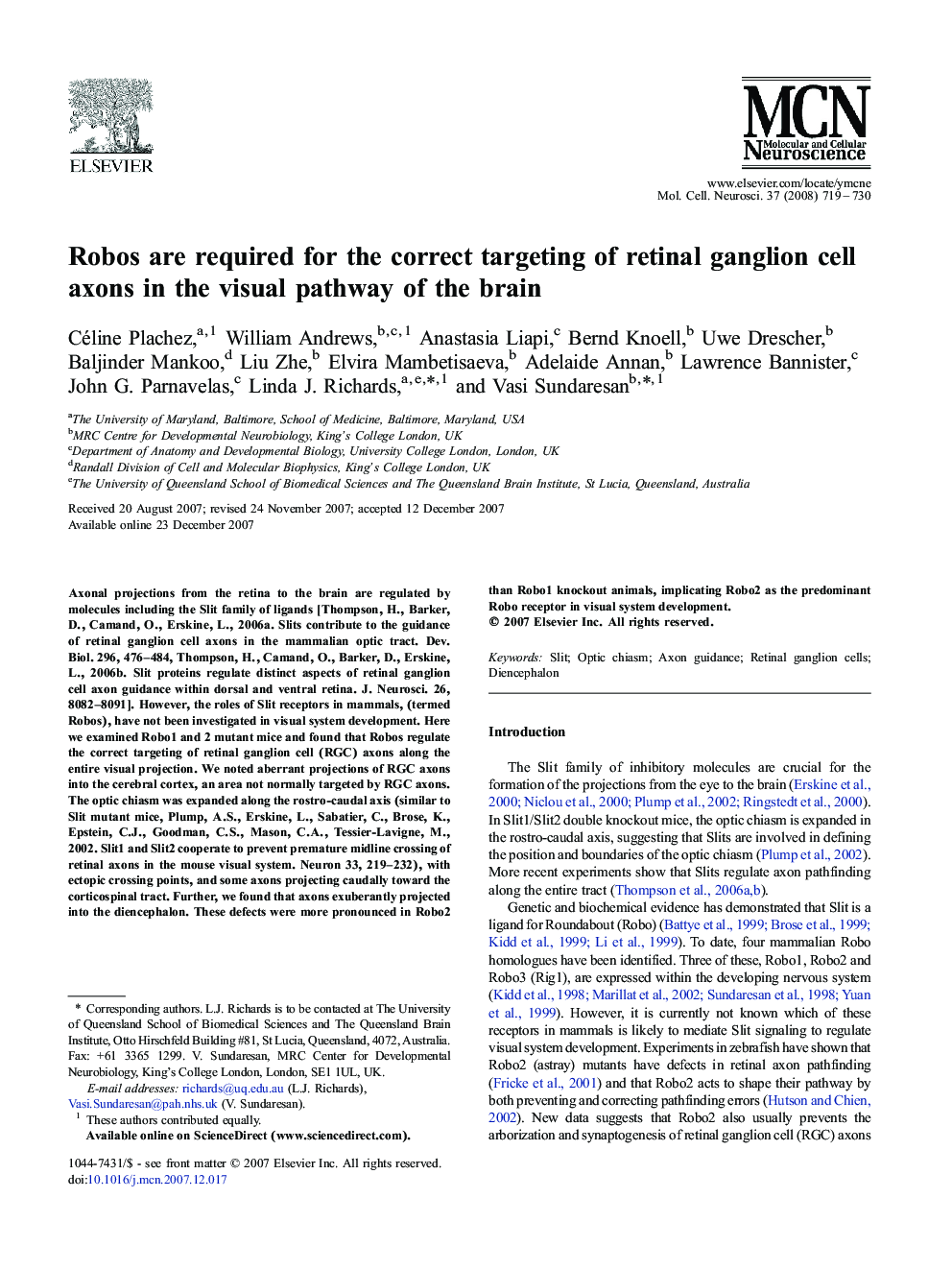| Article ID | Journal | Published Year | Pages | File Type |
|---|---|---|---|---|
| 2199125 | Molecular and Cellular Neuroscience | 2008 | 12 Pages |
Axonal projections from the retina to the brain are regulated by molecules including the Slit family of ligands [Thompson, H., Barker, D., Camand, O., Erskine, L., 2006a. Slits contribute to the guidance of retinal ganglion cell axons in the mammalian optic tract. Dev. Biol. 296, 476–484, Thompson, H., Camand, O., Barker, D., Erskine, L., 2006b. Slit proteins regulate distinct aspects of retinal ganglion cell axon guidance within dorsal and ventral retina. J. Neurosci. 26, 8082–8091]. However, the roles of Slit receptors in mammals, (termed Robos), have not been investigated in visual system development. Here we examined Robo1 and 2 mutant mice and found that Robos regulate the correct targeting of retinal ganglion cell (RGC) axons along the entire visual projection. We noted aberrant projections of RGC axons into the cerebral cortex, an area not normally targeted by RGC axons. The optic chiasm was expanded along the rostro-caudal axis (similar to Slit mutant mice, Plump, A.S., Erskine, L., Sabatier, C., Brose, K., Epstein, C.J., Goodman, C.S., Mason, C.A., Tessier-Lavigne, M., 2002. Slit1 and Slit2 cooperate to prevent premature midline crossing of retinal axons in the mouse visual system. Neuron 33, 219–232), with ectopic crossing points, and some axons projecting caudally toward the corticospinal tract. Further, we found that axons exuberantly projected into the diencephalon. These defects were more pronounced in Robo2 than Robo1 knockout animals, implicating Robo2 as the predominant Robo receptor in visual system development.
